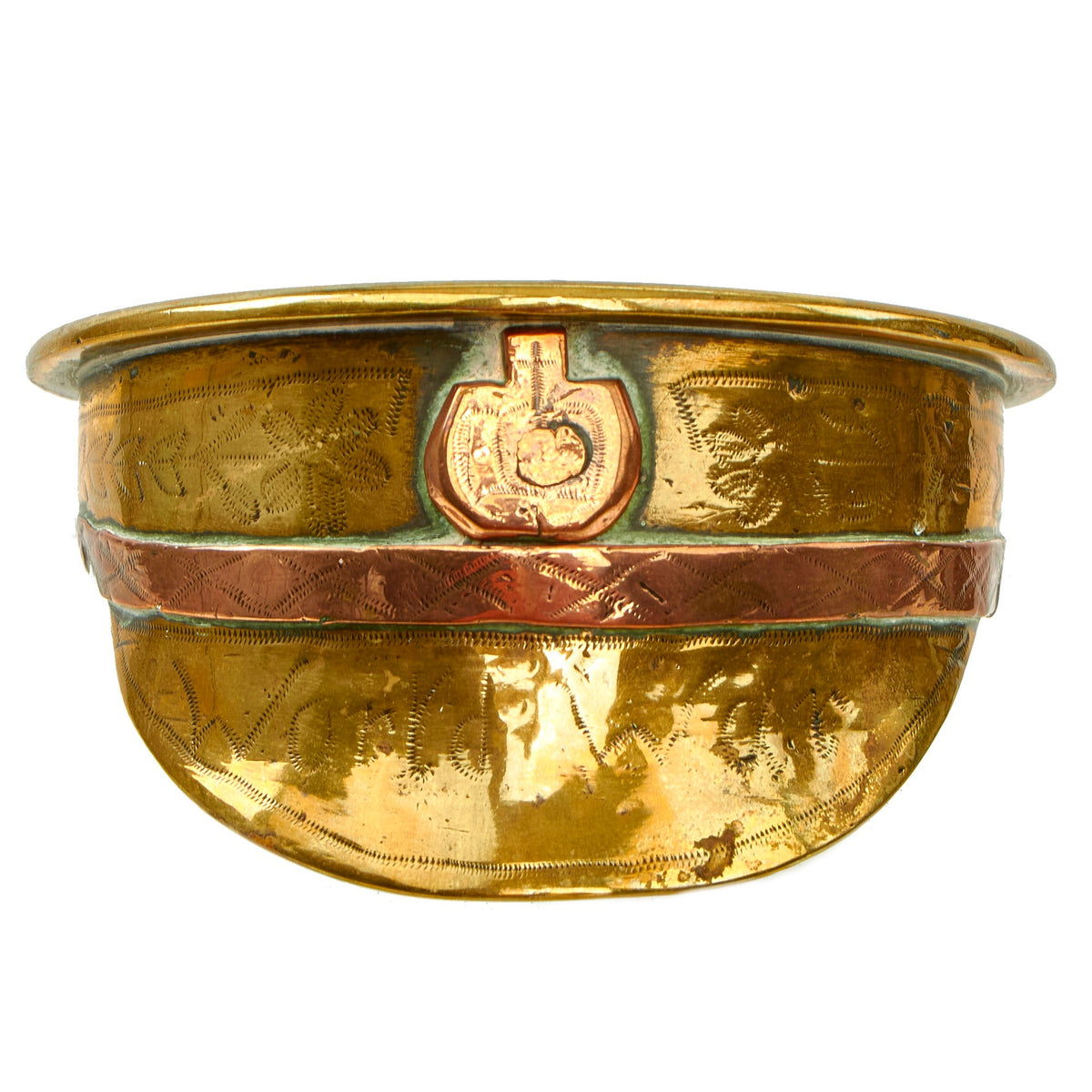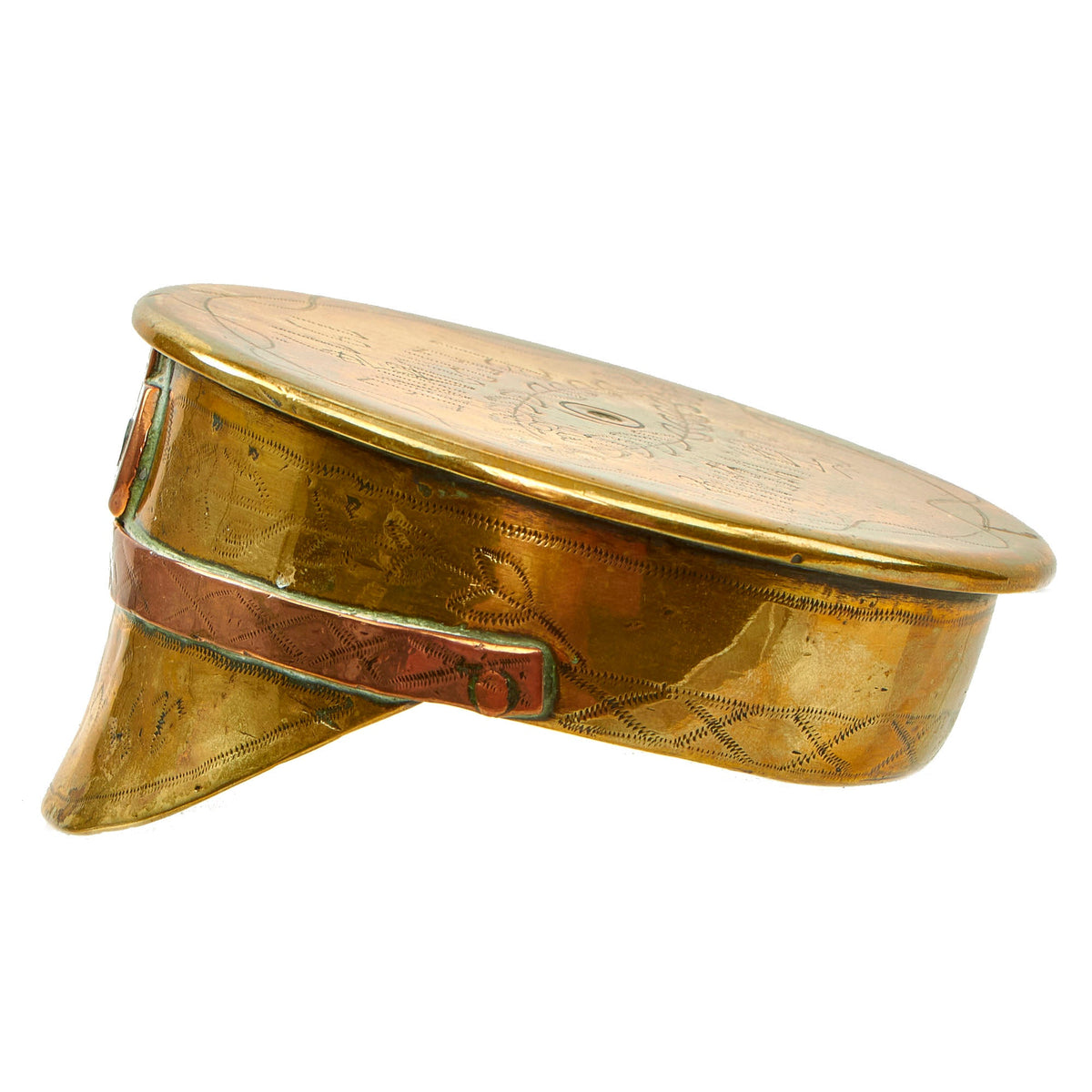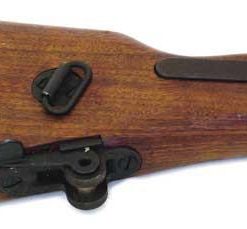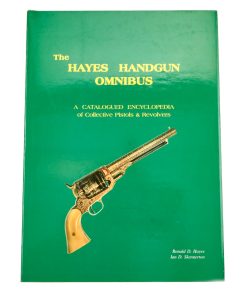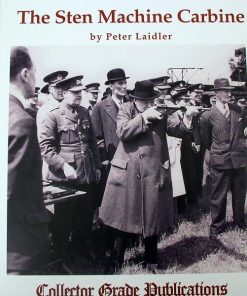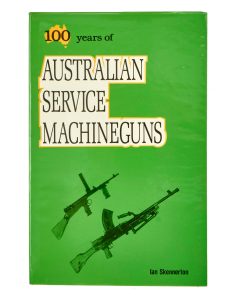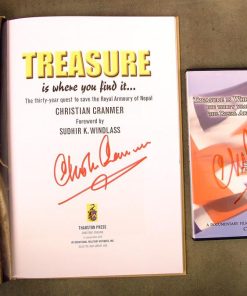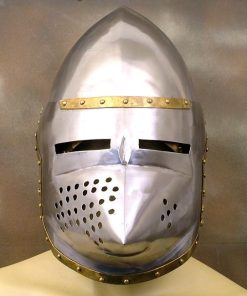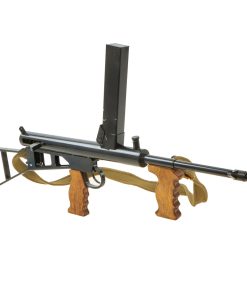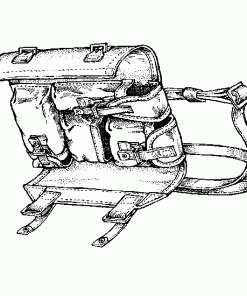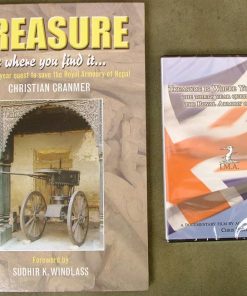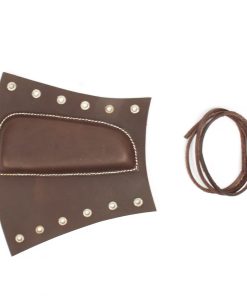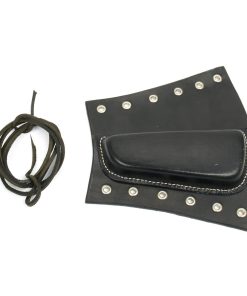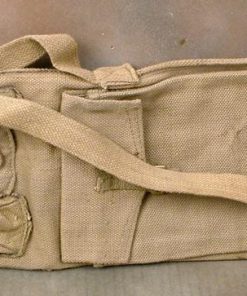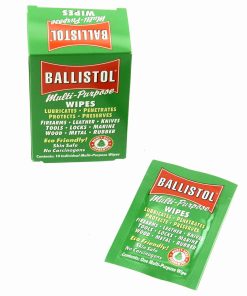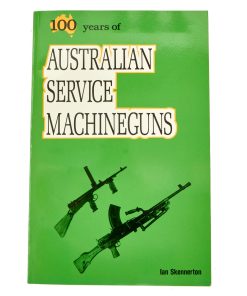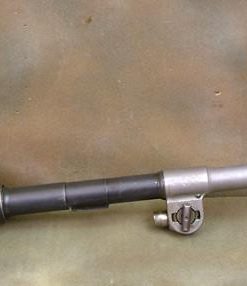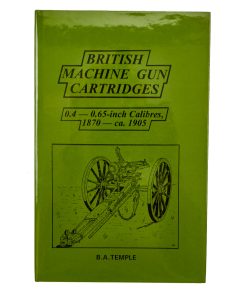Original British WWI Trench Art “Souvenir of Peronne” Peaked Visor Cap Made From German 77mm Shell Casing Original Items
$ 225,00 $ 90,00
Original Item: Only One Available. Trench art is any decorative item made by soldiers, prisoners of war, or civilians where the manufacture is directly linked to armed conflict or its consequences. It offers an insight not only to their feelings and emotions about the war, but also their surroundings and the materials they had available to them.
Not limited to the World Wars, the history of trench art spans conflicts from the Napoleonic Wars to the present day. Although the practice flourished during World War I, the term ‘trench art’ is also used to describe souvenirs manufactured by service personnel during World War II. Some items manufactured by soldiers, prisoners of war or civilians during earlier conflicts have been retrospectively described as trench art.
The cap is in wonderful condition though it most certainly was polished fairly recently with evidence of past polishing present as well. Unfortunately due to the amount of times someone decided to shine the brass, it wore down some of the details though they are still discernible. The top of the 3 ½” wide visor states the it is a “Souvenir [of] Peronne 1919 with WORLD WAR being present on the top of the visor. The Germans, seeing themselves pitted against the global empires of Britain and France, felt the world was against them from the outset. From their perspective, the war was of such magnitude that it created a sense of the whole world collapsing – the term World War expressed the scale of fear the conflict unleashed.
Peronne was a town which had been a German headquarters until it was abandoned in 1917. It was then used by the British until lost in the German Offensive of March 1918 and then finally liberated by Australian troops in September 1918. Although not raised to the ground like Ypres, none of its buildings escaped damage and it was classified as part of the Zone Rouge post-war.
War souvenirs are as old as warfare itself. Be they trophies of victory or personal keepsakes of combat experiences, soldiers have always saved material evidence of their wartime service. Some, if they had the skills, turned the materials of war into art.
The tradition of artistically handcrafting war souvenirs goes back to ancient times, but the practice flourished during the First World War. The abundance of items created by soldiers in World War I and in the years immediately after gave rise to the term “trench art.” Over time, the term has become generalized to refer to art made from ordnance or military equipment from any era much like this WWI visor cap.
Some trench art was actually made in the trenches. Other examples were made by soldiers convalescing in hospitals, or shortly after the war before they went home like this cap, indicating post war construction from the 1919 date etched into the top. The pieces were made as personal souvenirs, for family, or sold to other soldiers to earn money. Local civilians and laborers supporting the armies also crafted items from war debris they collected.
The cap is in wonderful condition and comes more than ready for further research and display.
Fast Shipping with Professional Packaging
Thanks to our longstanding association with UPS FedEx DHL, and other major international carriers, we are able to provide a range of shipping options. Our warehouse staff is expertly trained and will wrap your products according to our exact and precise specifications. Prior to shipping, your goods will be thoroughly examined and securely secured. We ship to thousands clients each day across multiple countries. This shows how we're dedicated to be the largest retailer on the internet. Warehouses and distribution centres can be located throughout Europe as well as the USA.
Note: Orders with more than one item will be assigned a processing date depending on the item.
Before shipping before shipping, we'll conduct a thorough inspection of the items you have ordered. Today, the majority of orders will be delivered within 48 hours. The delivery time will be between 3-7 days.
Returns
The stock is dynamic and we cannot completely manage it because multiple stakeholders are involved, including our factory and warehouse. So the actual stock may alter at any time. It's possible that you may not receive your order once the order has been made.
Our policy is valid for a period of 30 days. If you don't receive the product within 30 days, we are not able to issue a refund or an exchange.
You can only return an item if it is unused and in the same state as the day you received it. You must have the item in its original packaging.
Related products
Uncategorized
Uncategorized
Uncategorized
Uncategorized
Uncategorized
Uncategorized
Uncategorized
Uncategorized
Book & DVD Combo: Treasure is Where You Find It: Signed Collector Editions New Made Items
Uncategorized
Book: Small Arms ID by Ian Skennerton: .303 Pattern 1914 Rifle & Sniping New Made Items
Uncategorized
Australian WWII Owen MK1 Machine Carbine SMG Custom Fabricated Replica with Sling Original Items
Uncategorized
Uncategorized
Uncategorized


